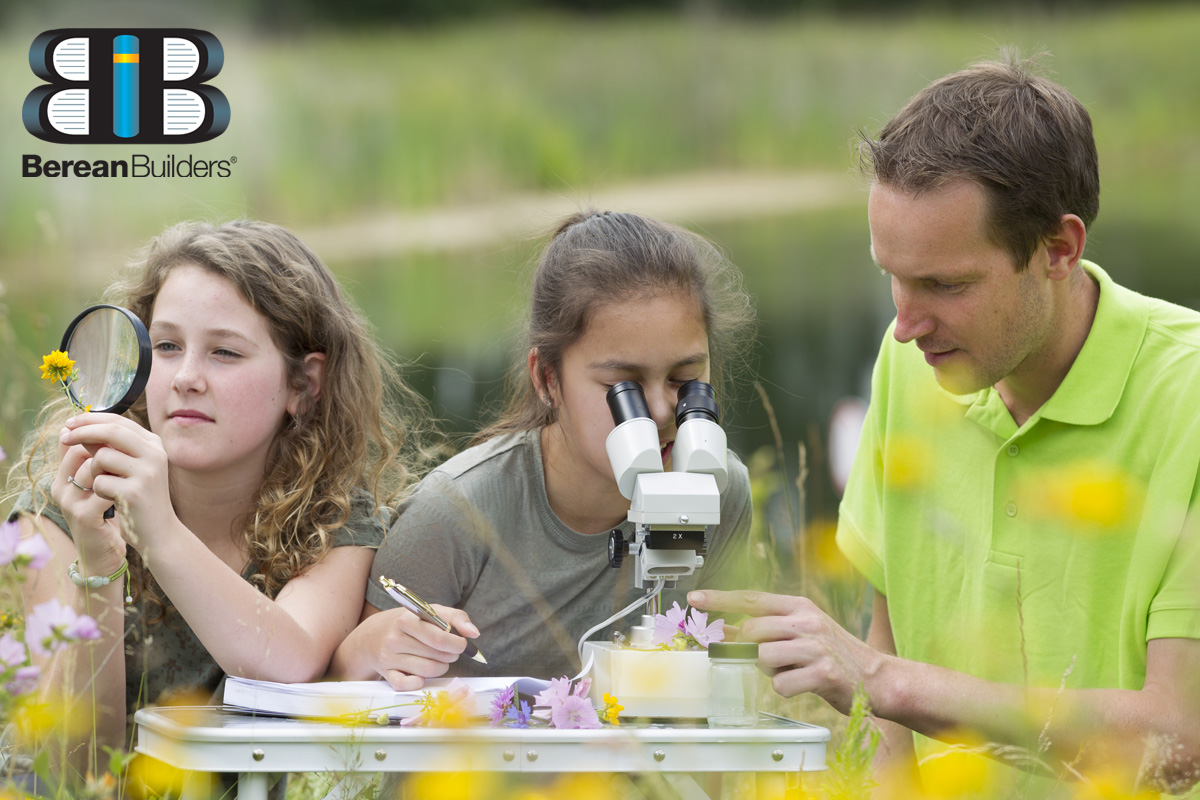
Berean Builders Science courses offer a complete learning experience for your student, including online science classes!
We understand students learn differently. Visual students gain their information from reading our textbooks. Students who take in new ideas by hearing them enjoy the audiobooks of our courses. And our hands-on experiments help those kinetic learners solidify concepts.
We also understand the value of live instruction, which is why Berean Builders offers online course lessons as well.
6 Benefits Of Online Science Classes In Your Homeschool
Once per week in a 90-minute videoconference call, Dr. Wile covers material from our chemistry and physics courses, and Mrs. Lori McKeeman instructs students in general science, physical science, and biology.
Online science classes can provide several benefits for your homeschooled students. Let’s explore some of these.
Personalized Learning
Since students have unique learning styles and needs, participating in our online courses addresses individual needs and provides personalized instruction and immediate feedback. These live lessons are engaging and conversational.
“It has been encouraging for me to notice [my daughter] giggling during Physics sessions with you. She tries so hard to keep up with her studies in your class. From my vantage point, it is a blessing to see her enjoying your sense of humor within the rigorous study of Honors Physics. Thank you so much for making her learning experience a joy.”
Interactive learning
Speaking of engaging, our online course lessons allow students to ask their questions and get real-time answers from the instructors, taking the textbook information to a broader, yet more personal, level. The students can grasp concepts quicker and build on them as the course progresses.
“I really enjoyed class this year. Your instruction has been the highlight of my entire time in high school. I read several of your other texts throughout high school and loved them, but this class with the live teaching has been incredible.”
Flexibility
Online science classes can be accessed from anywhere with an internet connection, making it easy for homeschool students to fit them into their schedule. This flexibility is particularly useful for homeschool families who have busy schedules or who travel frequently. Science on-the-go!
“I’m so sad that this class is almost over! You are one of the best teachers I’ve ever had! I’ll miss seeing you (even if it’s only over the Internet)!”
Access to quality instruction
Homeschool parents aren’t required to be experts in all the subjects. If the thought of teaching science gives you pause, our online classes are the solution. Dr. Wile and Mrs. McKeeman offer students access to high-quality instruction from educators who are passionate about science.
“My daughter is loving your Biology course this year. It’s the only day of the week she jumps out of bed excited for school. It has improved not only her science knowledge, but her work ethic, scheduling skills, and study skills. Please keep offering these!”
Preparation for college
If your student is college-bound, you understand the importance of high school preparation. Dr. Wile is a university professor and introduces students to college-level instruction through our online classes. Attendees get a first-hand look at how college classes can be structured, and our online courses prepare your students for university-level science. This can help students develop the skills they will need to transition and succeed in college.
“I wanted to thank you for being such an amazing Physics teacher to [my son] this school year. I rest easy knowing he is in phenomenal hands and is being thoroughly challenged in preparation for college. He thinks so highly of you and enjoys your classes very much. Thank you again!”
Access to a wider range of courses
Online science classes can provide homeschooling parents with access to a broader range of courses than they might be able to offer on their own. This can be especially helpful for parents who are not experts in science or who are unable to teach advanced courses.
“…my daughter, who did not want to take Chemistry, developed a strong appreciation for it because you made the concepts so understandable and the content so interesting. So much so that she told her sister she had to take Chemistry from you because she now believes Chemistry is not a have to take class, but a must take class. Every week she excitedly shared about some new concept she learned…Thanks for taking the subject she dreaded most and making it the subject she became the most excited about this year!”
Enriching
Science is just one facet of homeschool learning. At Berean Builders, we live by our name. We want your students to examine their world and ask deep questions. Through our live online classes, we offer opportunities for them to do just that.
“Your year-long Honors Physics class has been challenging, demanding, and wonderful. I think the struggles and demands it placed on [my son] helped him grow in many good ways. I particularly loved your invitation at the end of classes to discuss theological or other matters. Students at this age (and especially right now) face deep, important questions about God and our culture, and to have a godly, intelligent, and wise teacher/mentor to safely ask questions has been a huge godsend.”
For science this year, take a look at our online classes to see if Berean Builders Online is a good fit for your student. With all these benefits, we believe online science is a winner.














